5 Reasons Why Your Cruise Control Stopped Working
- Updated: March 15, 2023
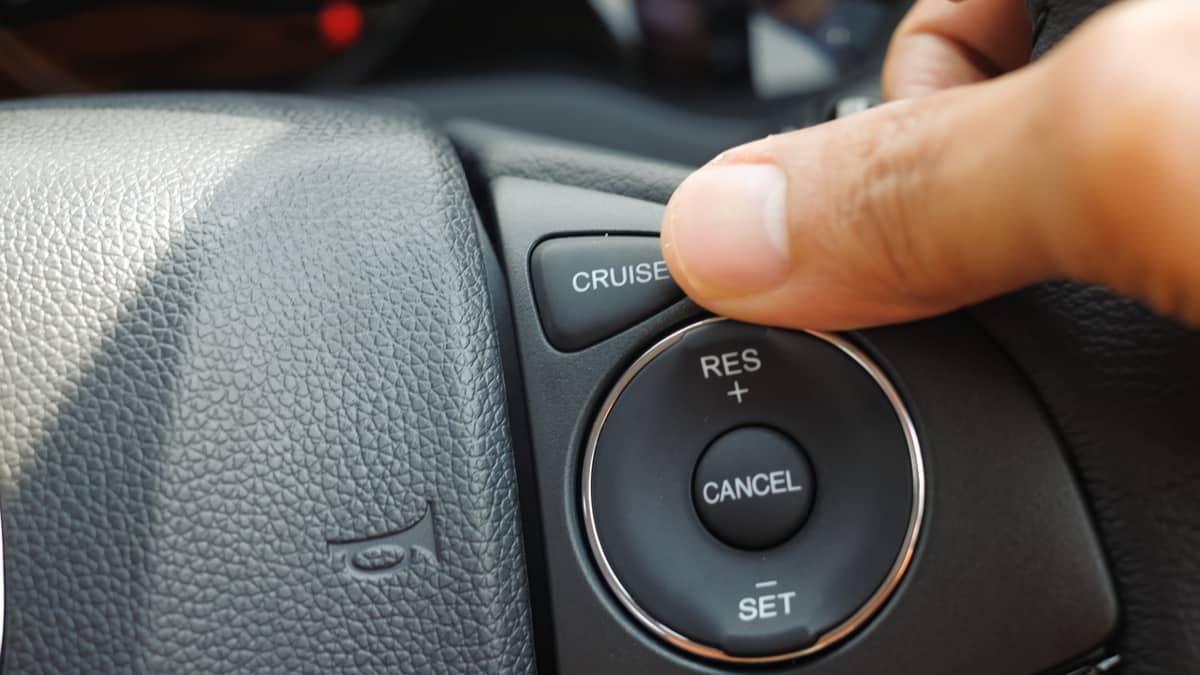
It would be difficult to find a vehicle on the road today without cruise control. This invaluable feature makes driving long distances easier but can also cause trouble when it malfunctions. Understanding the reasons your cruise control stopped working ensures that you can get the problem fixed quickly for a more enjoyable ride.
While this fault can cause issues with the cruise control system itself, there could also be an effect on the acceleration of your vehicle. That’s why you want to have it looked at as soon as you notice a problem. Let’s take a quick look at the reasons your cruise control may have stopped working.

Reasons Why Your Cruise Control Stopped Working
The most common reason a cruise control stops working is due to a blown fuse or a defective brake pedal switch . It can also be caused by issues with the throttle control system or the ABS. In older cruise control systems, it can be caused by a broken vacuum line.
Here is a more detailed list of the possible reasons your cruise control is not working:
1. Blown Fuse
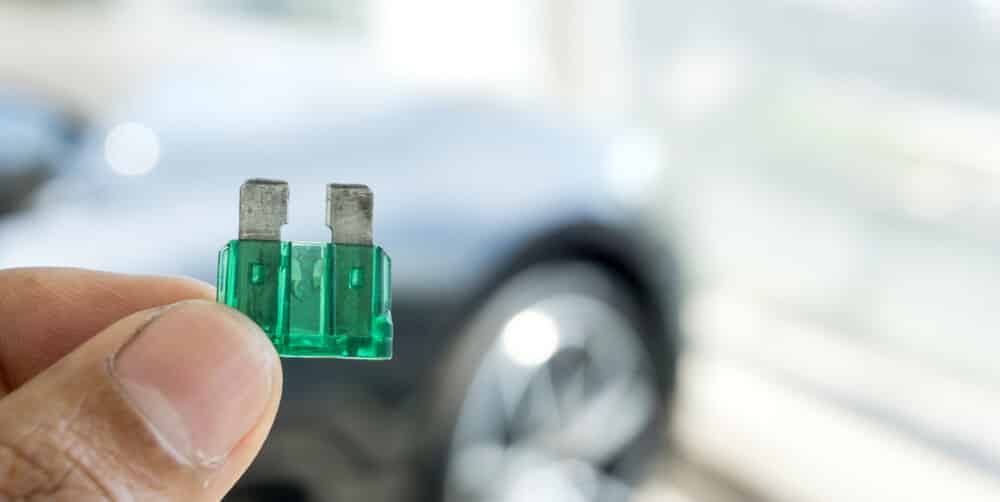
All electrical systems in the vehicle are controlled by fuses. Your cruise control system is attached to a fuse that can blow if there is a short circuit or fault. Without a good fuse, the cruise control system can’t work at all.
Thankfully, it’s not difficult to find and replace a blown fuse. Look in the owner’s manual to find the fuse that corresponds with the cruise control technology.
2. Defective Brake Pedal Switch
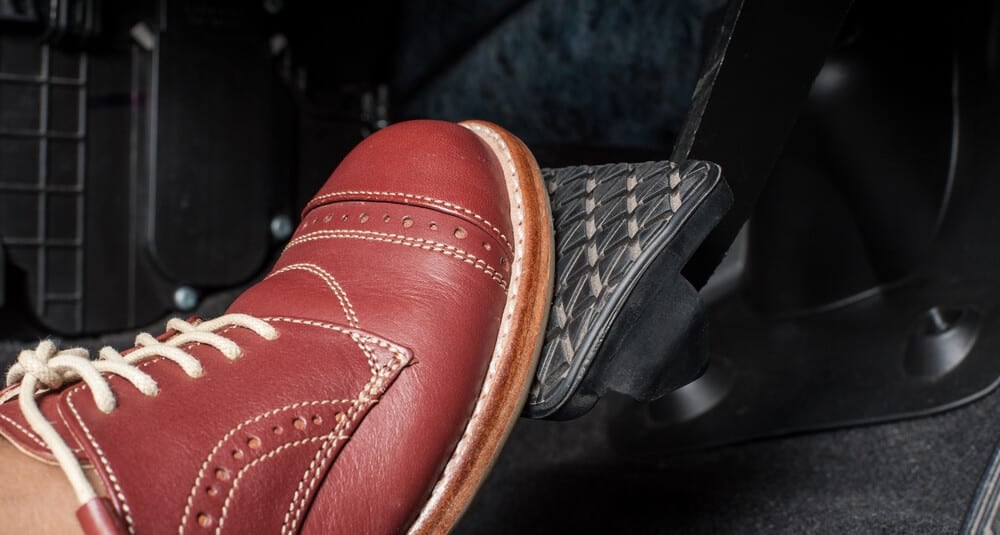
The brake pedal switch is responsible for turning the brake lights on and off based on the pedal position. Cruise control systems are designed to disengage whenever your brake pedal gets pressed.
Because the cruise control is wired into the brake pedal switch, any fault can cause it to stop working. When the brake pedal switch malfunctions, the car believes the brakes are engaged, causing the system to turn off automatically. Not only that, but your car’s brake light might also be stuck on, leaving confused drivers in your wake.
3. Malfunctioning Speed Sensor
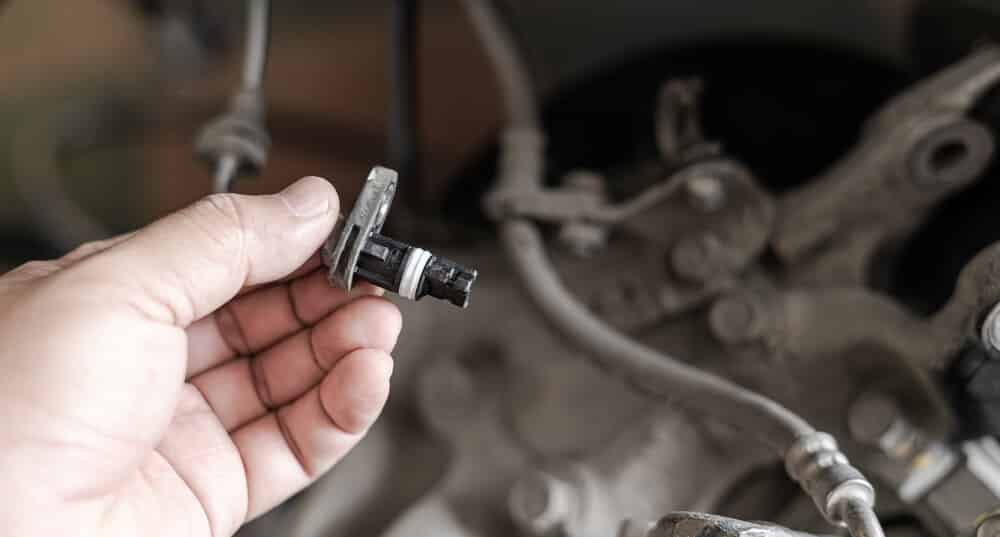
Speed sensors are located on every wheel or differential. The purpose of these sensors is to monitor the speed of the wheels to determine if traction control is needed.
The speed sensors are also part of the cruise control system. When a sensor fails, the cruise control can stop working and the speedometer might act strange as well.
If there is an issue with a speed sensor, it will often show with an ABS warning light or a check engine light on the dashboard.
RELATED: 3 Symptoms of a Bad ABS Wheel Speed Sensor
4. Electrical Issues
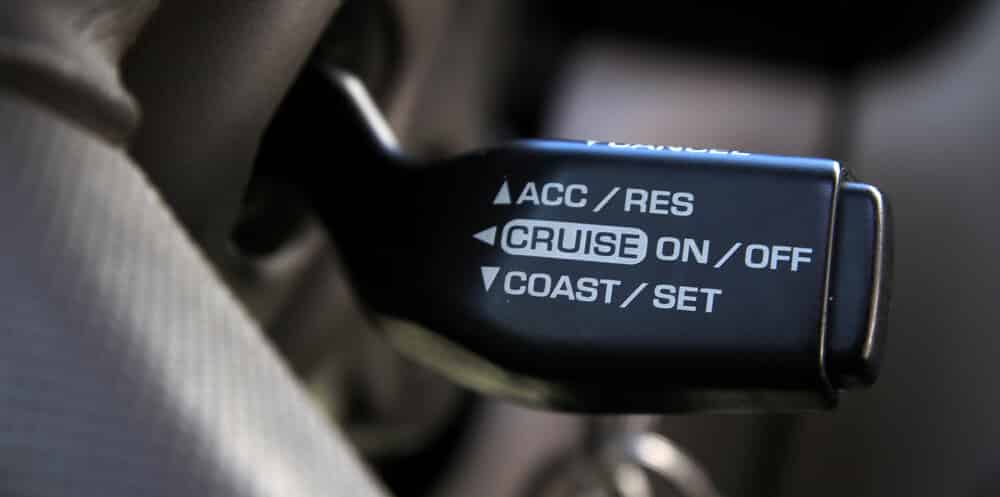
The cruise control system is electronic, with many components working together to make the system operate. If the cruise control fails to work, you want to check the wiring harness and associated connectors for a fault.
You also need to ensure that the voltage source is supplying enough power to the system. Even the smallest fault can cause defects with the cruise control. In many cases, there can be an issue with the cruise control lever or buttons causing the cruise control to not engage.
If your cruise control buttons are located on the steering wheel it could also be caused by a bad clock spring, which is located behind the steering wheel.
Check the system with an OBD2 scanner to look for any trouble codes related to the cruise control.
RELATED: 5 Symptoms of a Broken Clock Spring, Location & Replacement Cost
5. Damaged Vacuum Actuator, Hoses or Cable (Older cruise control)
If you drive an older vehicle with cruise control, you might have an issue with the vacuum actuator or the cable that connects to the throttle. If there has been damage done to the vacuum hoses or the actuator, the cruise control will stop working altogether.
Additionally, the cable linking the actuator to the throttle must be in good shape. If it has been broken, the cruise control will fail.
What is Cruise Control?
Cruise control is a feature that is used when you are traveling at a consistent speed. Cruise control was first introduced for automobiles in the 1950s. However, it took many years before it became a staple in the modern vehicle.
This electrical system allows you to set a predetermined speed and take your foot off of the gas pedal. If you are on a long drive, there is less fatigue because you don’t have to try to maintain your speed. Cruise control can also benefit fuel economy because the vehicle uses less fuel when traveling steadily.
In newer cars, you might be able to find adaptive cruise control , which is a smart technology. Adaptive cruise control allows you to travel at a predetermined speed, but it also helps to maintain a safe distance from the vehicles in front of you with the help of sensors. With conventional cruise control, you need to take over when the car in front of you slows down, but that’s not the case with adaptive cruise control.
There are also vehicles nowadays with not only cruise control, but fully self-driving vehicles . We will most likely see much more of this in the future.
Cruise Control Repair Cost
The cost to repair your cruise control system depends on what caused it to fail. If you need to replace a cruise control or brake switch, you might spend between $125 and $350, including parts and labor. However, the cost to change a fuse is only a few dollars and you can perform the replacement yourself in just a matter of seconds.
On the other hand, when something major fails, such as the actuator, you could be looking at a much higher repair bill. In some vehicles, the cost to replace a cruise control actuator can cost more than $700. These costs rise if you drive a luxury vehicle or one that is difficult to get parts for.
It might not seem immediately important for you to fix the broken cruise control, but this defective system can affect other performance aspects. You could start to notice issues with acceleration or have trouble with the speedometer. To play it safe, it’s always best to have the cruise control repaired as soon as you notice a problem.
Is there a fuse for the cruise control?
Yes. If the cruise control is installed from the factory, you should check your car’s owner’s manual for the fuse location. If it’s an aftermarket cruise control, you’ll need to follow the wires to find the fuse.
Does the brake switch affect the cruise control system?
Yes. The brake switch affects the cruise control system. The brake switch sends a signal to the cruise control system to let it know when the brakes are being applied for the engine to know when it should stop accelerating.
Will the cruise control work if the check engine light is on?
The cruise control function will be disabled when the check engine light is on in most car models, even if the cause of the check engine light is not the cruise control itself. This is mainly due to safety reasons.
Can a vacuum leak affect cruise control?
Older vehicles use vacuum to control the throttle for the cruise control, and in this case a vacuum leak can heavily affect the cruise control. However, modern cruise controls are fully electric and in most cases will not be affected by a vacuum leak if the check engine light is not illuminated.
Although many people may think that the cruise control system is unimportant and not worth spending money to repair, the problem can be caused by a faulty part that will affect the engine’s performance or durability. Therefore, it is best not to ignore the problem if your cruise control is not working without first diagnosing the car properly.
If your cruise control still isn’t working after trying all the tips in this article, it’s probably time to take it in for a professional opinion from a mechanic. It may be a more serious problem that requires replacement parts or repairs. In the meantime, drive safe and enjoy the open road!
Learn more:
- Brake Lights Not Working But Tail Lights Are? (How to Fix)
- Tail Lights Not Working But Brake Lights Are? (How to Fix)
- Brake Lights Stay On? (5 Causes & How to Fix it)
Categories: Electric , Troubleshooting
Related Posts

Latest Posts
- The Best & Worst Years Of Ford Explorer
- Best & Worst Years Of Toyota Corolla
- Best & Worst Years of Toyota RAV4
- When Should Your Child Switch To A Forward-Facing Car Seat?
- The Best & Worst Years Of Toyota Camry
- I Accidentally Put Premium Gas In My Car, What To Do?
- PRO Courses Guides New Tech Help Pro Expert Videos About wikiHow Pro Upgrade Sign In
- EDIT Edit this Article
- EXPLORE Tech Help Pro About Us Random Article Quizzes Request a New Article Community Dashboard This Or That Game Popular Categories Arts and Entertainment Artwork Books Movies Computers and Electronics Computers Phone Skills Technology Hacks Health Men's Health Mental Health Women's Health Relationships Dating Love Relationship Issues Hobbies and Crafts Crafts Drawing Games Education & Communication Communication Skills Personal Development Studying Personal Care and Style Fashion Hair Care Personal Hygiene Youth Personal Care School Stuff Dating All Categories Arts and Entertainment Finance and Business Home and Garden Relationship Quizzes Cars & Other Vehicles Food and Entertaining Personal Care and Style Sports and Fitness Computers and Electronics Health Pets and Animals Travel Education & Communication Hobbies and Crafts Philosophy and Religion Work World Family Life Holidays and Traditions Relationships Youth
- Browse Articles
- Learn Something New
- Quizzes Hot
- This Or That Game
- Train Your Brain
- Explore More
- Support wikiHow
- About wikiHow
- Log in / Sign up
- Cars & Other Vehicles
- Car Maintenance and Repair
Why Your Cruise Control Isn't Working
Last Updated: June 10, 2024 Fact Checked
Cruise Control Failure: Causes & Solutions
What happens if cruise control stops working.
This article was reviewed by Jason Shackelford and by wikiHow staff writer, Eric McClure . Jason Shackelford is the Owner of Stingray Auto Repair, a family owned and operated auto repair shop with locations in Seattle and Redmond, Washington. He has over 24 years of experience in auto repair and services, and every single technician on Jason’s team has more than 10 years of experience. This article has been fact-checked, ensuring the accuracy of any cited facts and confirming the authority of its sources.
Cruise control allows you to take your foot off of the gas pedal while maintaining a set speed so that your foot can get a break when you’re on long stretches of road with no traffic. However, there are a few common (and usually minor) automotive issues that can keep cruise control from functioning correctly. In this article, we’ll break down what might be going on so that you can fix the issue and get back to cruising comfortably.
Why Would Cruise Control Stop Working?
In most cases, cruise control stops working because of a blown fuse, faulty brake light, or bad brake switch. However, a check engine light or an engine-related issue could prevent your cruise control from working.

- Diagnosing this problem: Refer to your manual to locate the fuse box in your engine bay. With a cold car, pop the fuse box and remove the fuse dedicated to the cruise control. Either test the fuse with a multimeter or hold it up to a light source and inspect the wire inside to see if it is broken.
- Fixing the issue: Either see a mechanic or purchase a replacement fuse for your make and model. Insert the new fuse into the slot for the cruise control system and you’re good to go.
- Potential cost of repair: A new fuse shouldn’t run more than $10-30 unless you drive an exotic car. A mechanic will probably charge $100-200.

- Diagnosing this problem: Have a friend sit in your driver’s seat and press the brake pedal. Walk around your car and confirm the brake lights are working.
- Fixing the issue: If any of the brake lights are out, replace the bulbs . Your cruise control should come back on.
- Potential cost of repair: Seeing a mechanic for this will run $100 or so, plus the cost of the bulb. If you replace the light yourself, it shouldn’t cost more than $5-20 for the bulb.

- Diagnosing this problem: Have a friend sit behind the wheel and press the brake pedal to see what happens. If none of the lights come on—even after changing the bulbs—your brake switch is likely bad.
- Fixing the issue: A brake switch repair requires a professional mechanic, so take your vehicle to an automotive pro.
- Potential cost of repair: Luckily, brake switches are cheap and the repair is easy for a professional. Expect to pay roughly $75-100 depending on the shop minimum.

- Diagnosing this problem: Check your speedometer while you drive. If it isn’t working properly, the speed sensor is bad.
- Fixing the issue: See a mechanic to have the speed sensor replaced.
- Potential cost of repair: It depends on whether your speed sensor is embedded in the transmission or not. If it is, the repair may run up to $1,000. If it’s tucked behind your dashboard, it should only cost $100 or so.

- Diagnosing this problem: If your check engine light is on, it’s likely what’s keeping your cruise control off. Diagnose the issue by plugging in an OBD2 scan tool in your vehicle’s OBD port and running a scan to determine what the issue is.
- Fixing the issue: See a mechanic to have the underlying problem addressed (and the issue diagnosed, if needed).
- Potential cost of repair: The cost depends on the underlying problem. Something as simple as a new gas cap may only cost the shop minimum, but new spark plugs, engine damage, crankshaft failure, and other issues will cost much more.

- Diagnosing this problem: This is a tough issue to diagnose, but it will usually pop up in the error codes if you run an OBD2 scan .
- Fixing the issue: See a professional auto mechanic to have the vacuum actuator replaced.
- Potential cost of repair: The cost of the repair depends on the design of your actuator and whether it can be salvaged or not. It may cost anywhere from $200 to $2,000.

- Diagnosing this problem: Run an OBD2 scan to see if the ECU or ICM are throwing error codes.
- Fixing the issue: This is one of the more complicated issues you can run into, so see a mechanic to have them rewire a new ECU or ICM.
- Potential cost of repair: You’re probably looking at a $300-800 repair, but it can vary depending on the make and model of your car.

- Diagnosing this problem: You should be able to tell if this is the problem just by testing the pressure of the button.
- Fixing the issue: You can normally pop off the cruise control button with a flathead screwdriver and then clean it or replace it.
- Potential cost of repair: A new cruise control button shouldn’t run more than a few dollars.

Expert Q&A
You might also like.

- ↑ https://www.hancockclarion.com/2020/08/26/cobalts-are-just-weird/
- ↑ https://mycardoeswhat.org/deeper-learning/adaptive-cruise-control/
- ↑ https://www.customcompleteautomotive.com/blog/5-reasons-why-your-cruise-control-is-not-working
- ↑ https://klifex.ua/en/zaglushki-vihrevyh-zaslonok-i-komplekty-egr-egr/vakuumnyye-aktuatory
- ↑ https://youtu.be/49SjHjnnVn4?t=38
About This Article

- Send fan mail to authors
Did this article help you?

Featured Articles

Trending Articles

Watch Articles

- Terms of Use
- Privacy Policy
- Do Not Sell or Share My Info
- Not Selling Info
wikiHow Tech Help Pro:
Level up your tech skills and stay ahead of the curve
Cruise Control Not Working? 9 Potential Causes
gabrieletamborrelli / Getty Images
- Cars & Motorcycles
- Frugal Living
- Fine Arts & Crafts
- Card Games & Gambling
- Playing Music
Cruise control reduces stress and fatigue on long drives, but if the system isn't working properly, it can become dangerous. If your vehicle's cruise control isn't working, one of the following nine issues may be the root cause.
How Cruise Control Works
Cruise control is a system to maintain vehicle speed without direct driver input. When you want to engage cruise control, you first turn the system “On” with a button or switch. However, this alone does not start the cruise control. When you “Set” cruising speed, the cruise control module (CCM) records the current speed, then takes control of the throttle body to maintain vehicle speed. When vehicle speed increases or decreases (due to wind or hills, for example), the CCM decreases or increases throttle body opening accordingly.
By modulating engine speed, the CCM can maintain your desired cruising speed on the highway. You can increase or decrease cruise speed by tapping a button or lever, and you can cancel cruise control by hitting the “Cancel” or “Off” buttons or stepping on the brake.
Throttle body control has changed over the years. Early systems used a vacuum motor and cable, but these eventually changed over to electric motors. Most recently, with the development of drive-by-wire or electronic throttle control systems (ETCS), cruise control is built into the engine control module (ECM), which controls the throttle body electronically.
Basic cruise control systems still require the driver to pay attention to changing road and traffic conditions. Adaptive cruise control systems, sometimes called "smart" cruise, use radar or laser detection to maintain safe distances from vehicles ahead. Some adaptive cruise control systems merely reduce engine speed to maintain distance, but some of the newest adaptive cruise control systems can also engage the brakes to slow or stop the vehicle. Still, even with adaptive cruise control, it's important that drivers never take their eyes off the road.
Why Is My Cruise Control Not Working?
There are a few basic ways that cruise control can fail, depending on how the system is designed. You may not be able to do much about ETCS cruise control systems, but there are a few things you can check:
Brake Light Switch – As cruise control is automatically cancelled by depressing the brake, some vehicles may disengage cruise control if it cannot detect the brake light switch.
Brake Lights – In some systems, cruise control is disabled when a brake light is blown. Aftermarket lighting, such as LED brake light conversion, might trick the CCM into thinking a brake light is blown, as LED bulbs draw less current than incandescent bulbs.
Fuses and Relays – On some vehicles, fuses and relays are used to protect the cruise control actuator circuit . If the fuse is blown or the relay is faulty, the system won’t work.
Spiral Cable – Many vehicles mount the cruise control switch on the steering wheel. A faulty spiral cable may have an open circuit, preventing the switch from contacting the CCM.
Control Switch – If the internal contacts wear out, the cruise control switch may not be able to contact the CCM. This might disable cruise control completely, or it might not react to the cancel or accelerate functions.
Check Engine Light – On some modern vehicles, particularly those equipped with ETCS, cruise control may be disabled if there is an engine or transmission problem .
Vacuum Leak – Some older vehicles used vacuum actuators to control the throttle body during cruise control operation. If there is a leak, such as a cracked hose or tube, the system won’t work. A vacuum leak might cause the engine to idler higher or set a fuel trim code.
Vehicle Speed Sensor – There are usually multiple vehicle speed sensors (VSS) on any given vehicle. The CCM might use a VSS feed from the ECM, instrument cluster, or transmission. If that signal is lost, the CCM can’t detect vehicle speed, disabling cruise control.
Electrical Problems – As most cruise control systems use electrical or electronic components, any diagnosis should include a thorough check of source voltage, wiring harnesses, and connectors. Anything loose or broken could disable the system entirely.
If your cruise control isn’t working properly, avoid using it until it is repaired. A faulty cruise control system may not cancel on demand, which will create a safety hazard for you and those around you. After assessing your cruise control yourself, take your vehicle to a trusted mechanic for a check or a couple diagnosis and repair.
- How Electronic Throttle Control (ETC) Works
- How the Air Intake System Works
- ABS Brakes and the Facts
- Engine Vacuum Leak: Symptoms and Solutions
- How to Find a Short Circuit
- Troubleshooting Common Condenser Fan Problems
- How to Diagnose a Ford Expedition Transmission Problem
- Why Is My Car Shaking at Idle?
- Diagnosing GM Converter Lock-Up Problems
- 3 Ways to Reset a Check Engine Light
- Car Charging System Check
- What Is a Throttle Body and How Does It Work?
- Why You Can't Read Your OBD-II Codes
- What to Do When Your Car Won't Start or Turn Over
- Why Does the Emergency Brake Light Stay on in My Chevy C1500 Pickup?
- What to Do When Your Tire Pressure Light Is Flashing
- Why is my Cruise Control not Working? [14 reasons]
14 Reasons Why your Cruise Control may NOT Be Working
The reason for your cruise control not working could be as simple as a blown fuse to really complex electrical problems. Defective switches, sensors, and even “check engine” light, all could contribute to this problem.
If you like to travel and own a car fitted with cruise control, you know how comfortable it can be to maintain a constant speed! When a cruise control system gets damaged, it is just as annoying as it is dangerous.
Cruise control is connected to several components of the car, and when it fails it can mean that something could be wrong with the CC itself. It could also be a signal that something wrong is happening with any other component of the car.
Why is my cruise control not working?
In this article, I am going to show you the main reasons why your cruise control may not be working (from the simplest to the more complex ones):
Reason #1. Bad or blown fuse
The cruise control’s circuit (like many other electronic components of your car), is protected by a fuse that will blow to protect the system from short circuits and overloads. If your vehicle’s cruise control fuse is blown, the system will stop working.
You can replace the fuse with a new one of the correct amperage, according to your vehicle’s owner manual. If the new fuse doesn’t blow again, everything will be ok; if the fuse blows again, you have to keep searching for what is making that fuse blow.
Reason #2. Burnt brake lamp
Some cruise control systems are disabled when the brake lamp is blown. Check your brake lights. If you find a burnt brake light, just replace it and test the system again.
Reason #3. Defective brake light switch
A defective pedal switch can also make your cruise control stop working. Remember that all cruise control systems are automatically disengaged as soon as the brake pedal is pressed down.
If the cruise control didn’t stop working when a fault in the brake light or brake pedal switch is detected, it could be dangerous; that’s why the CC control unit constantly monitors the status of this switch.
Reason #4. Clutch pedal switch deactivation (for manual transmission vehicles)
Cruise control is deactivated when the clutch is pressed by the driver in manual transmission cars. The CC control unit monitors this switch as it does the brake light switch.
Reason #5. The vehicle speed sensor is not working
A vehicle’s cruise control needs to be able to determine the vehicle’s actual speed. This enables the system to determine how much throttle needs to be applied in order to keep a certain speed, among other things.
The speedometer speed sensor is not always the sensor used by cruise control. Some systems rely on the ABS speed sensors, others do an average and some have a dedicated speed sensor.
If the system can’t detect the vehicle’s speed or detects a problem with the speed sensor, it will stop working.
Reason #6. Faulty throttle body or accelerator pedal
In modern engines, the throttle body is driven electronically by the engine control unit (ECU), and the accelerator pedal works like a potentiometer. The processor managing the cruise control system will act as the accelerator pedal, sending more or less voltage to the throttle body to open or close the throttle body’s butterfly valve.
If there is a problem with your vehicle’s throttle body, your cruise control won’t work.
Reason #7. Check Engine light is “ON”
If your vehicle instrument panel has the “Check Engine Light” ON and the fault stored in the ECU’s memory is related to some component vital for the cruise control system, you will not be able to use your cruise control until you have fixed that problem.
Reason #8. Faulty steering wheel’s spiral cable/clock spring
The spiral cable connects all the switches from the steering wheel (in case your steering wheel has switches) to their respective modules. This includes the connection of the driver’s airbag.
These wires (also called clock springs) are prone to get cut. A faulty spiral cable may have an open circuit making it unable to reach the vehicle’s cruise control module (CCM).
Reason #9. Bad Cruise Control Switch
Your vehicle’s cruise control switches have internal contacts that wear out. If that happens, the switches won’t be able to contact the CCM.
Depending on which buttons are faulty, your whole cruise control can stop working or just some functions won’t work.
Reason #10. Electrical problems with different modules and wiring
Modern cruise control systems use electrical and electronic components, and they are connected to other modules and systems of the vehicle. Some of these systems are the ECU, ABS, and/or Stability Control Systems like ESP.
The CCM makes a check of these systems once the key is switched to ON, and if some of these components are not working in optimal conditions, the CCM won’t engage. If none of the above items seem to be the problem, the vehicle needs to be taken to a professional who can perform a full scan of all the components, check that all the voltages, wiring harnesses, and connectors are ok.
The professional is going to detect if there are any connection problems between modules and will be able to find the reason why the cruise control is not working.
Reason #11. Dirty or faulty camera or sensor (only for vehicles fitted with adaptive cruise controls)
Newer vehicles have adaptive cruise control systems. These devices not only keep a fixed speed by the driver; they also can detect other vehicles ahead and behind and are able to keep a safe fixed distance to avoid collisions.
Some of these new systems have laser sensors while others have cameras to calculate the right distance to follow considering the vehicle’s speed and acceleration. Any problem with the sensors will prevent adaptive cruise control from working.
Problems with older cruise control systems
Before electronic injection and electronic throttle bodies, some cars had the cruise control function. In fact, the first cruise controls were introduced in the early 1950s.
These electromechanical cruise controls are pretty simple. They have a vacuum actuator connected to the throttle linkage that opens and closes the throttle to maintain the vehicle’s speed.
In early injection cars, the throttle linkage was replaced by a cable. Some common faults of these old cruise control systems are:
- A faulty vacuum actuator. Vacuum actuators have a diaphragm inside that can break. Any vacuum leak will lead to failure.
- Faulty vacuum control solenoid. It can prevent the actuator from operating normally.
- Broken throttle cable. If the throttle cable or linkage is broken, it needs to be replaced.
I hope you enjoyed my guide to cruise control problems. Even though it doesn’t explain how to fix your cruise control, it gives you an idea of where to start looking if you are going to do it yourself.
Now you will have an idea about how the system works and what are the possible reasons why it’s failing (in case you have to take your vehicle to a shop to be repaired).
Attention! This article is for informational purposes ONLY and is NOT a replacement for professional advice! ALWAYS consult your local specialist for an appropriate solution to your problem. All statements, prices, contact information, recommendations, and reviews contained herein came from sources that we believe to be reliable, but the accuracy or completeness thereof is not guaranteed. Please contact the service provider for complete details and updates.
I always Know and admit that even though I went to school for ABR grad. In 1994 3.36gpa still have go go back to school for upgrades due to vehicle advancement but I still learned alot although I am dealing with an 05 f150 stx which has more recalls then a auto parts store where the employees don’t know a inerta. Switch from an ignition switch ,thanks for the information
Leave a Reply Cancel reply
Your email address will not be published. Required fields are marked *
Save my name, email, and website in this browser for the next time I comment.
Privacy Overview
Automated page speed optimizations for fast site performance

Cruise Control not Working (Diagnosis and Troubleshooting)
What makes cruise control not work.
Bad brake pedal/light switch — This means communication between you, cruise control and the car is interrupted, and you can’t have immediate manual control of the car.
Bad fuse — Fuses blow to protect the electrical system. Cruise control fuses will do the same, to protect the system and circuits in your car the fuse will break and then need repairing.
Failing speed sensor — Speed sensors are important in cruise control because your car needs to remain at the same speed consistently. Broken speed sensors will affect more than cruise control and need to be serviced urgently
Bad actuator vacuum, hose, or cable –The actuator vacuum is what connects and activates the throttle control. The fault may be with the hoses in the vacuum actuator or the cable linking the system together.
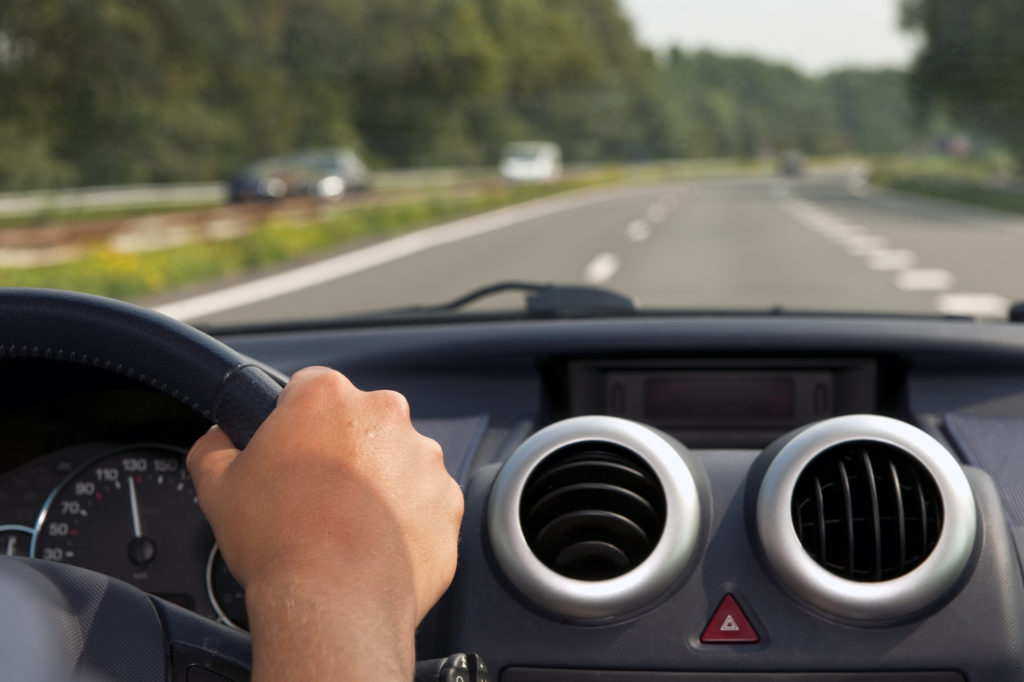
Symptoms of bad cruise control switch
- Symptom 1 — brake pedal does not disengage cruise control
There’s a switch fixed to the bases of the brake pedal and if cruise control does not deactivate when braking then it’s a sign that this switch is faulty.
- Symptom 2 — Hissing noises are heard from under the dash.
The cruise control switch is a vacuum system and for some vehicles, it is mounted near the brake pedals under the dash. If you can hear hissing, it could indicate that the switch or one of the switch’s vacuum hoses is broken.
- Symptom 3 — The cruise control switch/button itself does not work
When trying to turn on the function or while cruising it turns off, this is an indicator of a faulty switch and can be related to wiring issues or the above (1-2) symptoms
- Symptom 4 — A blown fuse
A blown fuse could be a simple error and fix. The switch circuit or fuse may just need to be replaced for the problem to resolve.
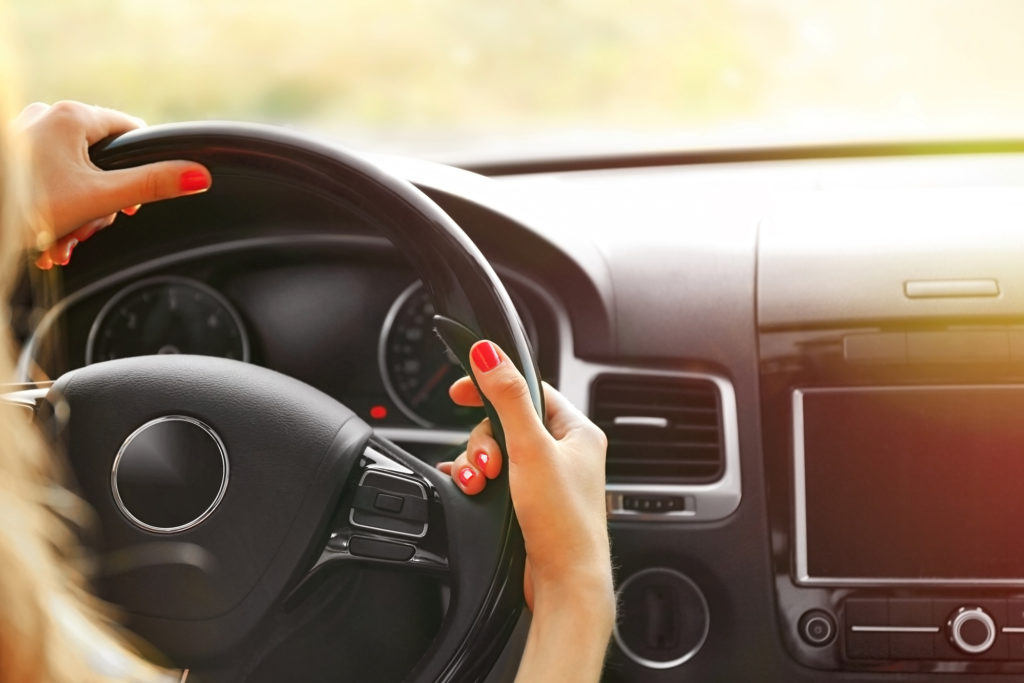
Possible Cruise control failure Scenarios
1. Cruise control not working after battery change
- Possible cause — This differs from vehicle to vehicle and among brands. Some drivers’ cruise control malfunctions after jump-starting their battery, and this is because the battery is still discharged. Newer cars have many electronic systems, and most are powered by the battery. So, if the battery is discharged or low-powered, the electrical cruise control system can be affected.
- Solution — Putting your battery on a trickle charger (2-5 amp) for 12 hours or driving on cruise for a couple of hours may resolve this issue.
2. Cruise control turns off while driving
- Possible cause — Damaged speed sensor or actuator, these two could be internally malfunctioning and causing the cruise control to disengage without input from you.
- Solution — Have a technician or mechanic run a diagnostic with the speed sensor and check the actuator hoses and cables.
3. Cruise control works intermittently
- Possible cause — this may relate to the brake pedal switch. If cruise control is intermittently disengaging, it could be a wiring issue with the switch.
- Solution — Have the brake pedal to cruise control switch investigated by a mechanic or technician and determine if there is a faulty wire to blame. You may need to have the switch or some of its parts replaced.
4. Cruise control turns on but will not set
- Possible cause — The brake pedal switch may be the issue. The brake pedal deactivates cruise control and if it is stuck in the open position, it may cause the cruise control to not engage or set properly.
- Solution — Ask your mechanic or technician to check for this issue specifically in their diagnostic and service.
5. Cruise control turns on by itself
- Possible cause — There may be a failure with the Electronic Control Module (ECM) which manages the actuators or Electronic Control Unit (ECU) which controls the speed in your cruise control
- Solution — You could attempt to reprogram the ECU and ECM if you have the computer tools, otherwise take it into a trusted mechanic or technician.
There are many helpful forums run by mechanics and amateurs: These are always great for solving those specific problems you might experience.
When CC does not set: https://mechanics.stackexchange.com/questions/34795/cruise-control-will-not-turn-on-cannot-be-enabled-nor-set
When CC is faulty after battery change: https://www.vwvortex.com/threads/help-cruise-control-not-working-after-dead-battery.4464553/
For cruise control and other general repairs, watch this channel: https://www.youtube.com/channel/UCf2f4MeZzSksVMe1z3Lp3hw
Can cruise control cause check engine light?
When the check engine light or MIL (Malfunction Indicator Light) is on, the cruise control light may blink to signal that cruise control has been disabled. This is a safety control as the vehicle is programmed to not go on ‘autopilot’ should the engine or mechanical issue relate to the cruise control systems. If the error or fault is with the cruise control systems, then the MIL may be lit for that as well.
How much does it cost to fix cruise control malfunctions?
- For switch repair (parts and labour) it’s estimated at $125- $350
- For fuse repairs, it could be up to $10 to buy the fuse and replace it yourself in a few minutes — there are many helpful YouTube tutorials on simple car repairs like this one.
- For actuator repairs, some cost more than $700
- Therefore, it’s important to know WHAT the issue is to get an idea of HOW MUCH it will cost you.
Does cruise control malfunction trigger the check engine light?
The function of a check engine light or MIL (Malfunction Indicator Light) is to communicate engine or mechanical failures in your vehicle to prevent an accident on the road. The MIL can be lit for simple reasons like the gas cap is loose. Should your CC system fail or run incorrectly, the MIL could light up. Often when there are other failures or engine faults, the MIL will light and the cruise control with a flicker to signal it has been disabled for safety reasons. Once the cruise control or other issues are fixed, all the lights should go back to being turned off.

Author: Dave Johnston
Related articles.
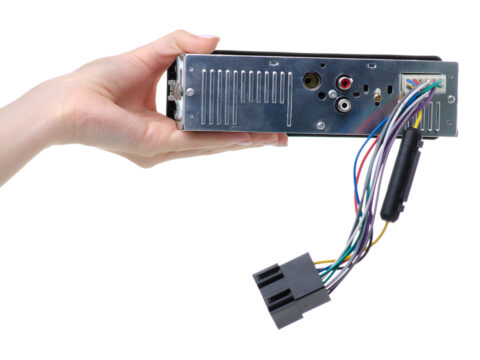
Leave a Reply Cancel reply
Your email address will not be published. Required fields are marked *
Save my name, email, and website in this browser for the next time I comment.
Recent Posts

MyCarMakesNoise.com
Copyright © 2024 My Car Makes Noise
7 Reasons Why Cruise Control Not Turning ON (And How to Fix Them)
Facing the frustration of “Cruise Control Not Turning ON” led me down an unexpected path of discovery. I researched far and wide, diving into manuals and forums alike. It turns out, the solution often lies in the simplest of fixes. Checking the fuse was my first step, a small but … Read more
Written by: Mohammad Sameer
Updated on: 19/03/2024
Facing the frustration of “Cruise Control Not Turning ON” led me down an unexpected path of discovery. I researched far and wide, diving into manuals and forums alike.
It turns out, the solution often lies in the simplest of fixes. Checking the fuse was my first step, a small but mighty component.
I also learned the importance of ensuring the brake lights function properly; they’re interconnected. Adjusting the brake pedal switch was another revelation, a tweak that can make all the difference.
Now, sharing these insights feels like handing out keys to a secret kingdom, where every drive could be smooth sailing.
Table of Contents
Key Takeaways
- Blown Fuse : A blown fuse in the electrical system can cause the cruise control to stop working
- Speed Sensor Issues : Problems with the speed sensor can lead to cruise control malfunctions, affecting the system’s ability to regulate speed
- Brake Light or Brake Pedal Switch : A faulty brake light or brake pedal switch can prevent the cruise control from engaging properly
- Electrical System Problems : Issues within the vehicle’s electrical system, such as loose wires or damaged components, can impact the cruise control functionality
- Worn Cruise Control Switch : Over time, the cruise control switch can wear out, affecting its ability to communicate with the system
- Wiring Problems : Wiring issues in modern vehicles can also lead to cruise control failures, caused by factors like rodent damage or loose connections
- Vacuum System Faults : In older models using a vacuum actuator for cruise control, leaks in the vacuum system can cause the cruise control to stop working
Will a fuse cause cruise control to stop working?
Yes, a fuse can cause the cruise control to stop working. The cruise control system is part of the electrical system in a vehicle, and if a fuse related to the cruise control blows, it can lead to the system malfunctioning. When a fuse blows, it disrupts the electrical flow necessary for the cruise control to function correctly. Replacing a blown fuse is a relatively simple and inexpensive repair that can restore the cruise control’s operation.
7 Reasons Why Your Cruise Control Not Turning ON (And How to Fix Them)

1. Improper Operating Conditions
Ever found yourself puzzled because your cruise control just won’t engage? Well, before you start worrying, let’s make sure you’re using it right.
Cruise control systems have their quirks , such as not activating below certain speeds—typically around 25 to 30 mph.
And if you’re zipping above the system’s upper limit, it won’t turn on either. It’s always a good idea to peek at your owner’s manual for the nitty-gritty of how your car’s cruise control should be operated.
Remember, cruise control is a bit like a finicky house cat—it needs conditions to be just right. Too slow, too fast, or the wrong gear, and it’ll just ignore you.
Now, if you’re sure you’ve got all that down and it’s still being stubborn, consider other factors. Adverse weather , for instance, is a no-go zone for cruise control.
Slippery conditions from rain, snow, or ice can throw off the system’s sensors , leading to less traction and potentially more danger.
And let’s not forget hilly terrain , where the constant up and down can confuse even the smartest cruise control.
- Check your speed – are you within the operating range?
- Avoid using cruise control in bad weather.
- Be mindful of hilly areas that can disrupt the system.
If you’ve ticked all these boxes and your cruise control is still giving you the cold shoulder, it might be time to delve deeper into potential issues like a blown fuse , a broken speed sensor, or a failing brake pedal switch.
These are just a few culprits that could be messing with your ride’s ability to maintain a steady cruise.
2. Sensor and Switch Issues

I’ve noticed that sometimes my cruise control acts up, and it turns out sensor and switch issues are pretty common culprits. For instance, a faulty brake or clutch switch can prevent the system from engaging.
Even more advanced systems with additional sensors , like the APP sensors, can malfunction , leading to unpredictable cruise control behaviour.
Here’s a quick checklist I go through when I suspect sensor or switch problems:
- Reset power to clear temporary glitches
- Clean contacts to ensure good signal transmission
- Lubricate latches to prevent sticking
- Inspect wires for damage or corrosion
- Update software to fix bugs
- Replace faulty components if necessary
If these steps don’t solve the issue, it’s time to visit a mechanic. Remember, driving with a malfunctioning cruise control can be risky, as it might lead to degraded stability control and potentially longer stopping distances.
It’s frustrating when the cruise control suddenly stops without any input from me. It’s not just inconvenient; it’s a safety hazard that needs immediate attention.
3. Control Module Issues

When I’m troubleshooting my car’s cruise control, I always keep in mind that the control module is the brain of the operation. If there’s a hiccup here, the whole system can go haywire.
It’s like when you’re dealing with car starting issues; you check the spark plugs, fuel system, and electrical components, but sometimes you need professional help for those complex problems.
The symptoms of a failing control module can be subtle. You might notice the cruise control not engaging or disengaging unexpectedly.
It’s similar to handling OBD-II codes where you scan, assess, and inspect components like the oxygen sensor wiring to avoid grounding issues.
Here’s a quick checklist to diagnose control module issues:
- Verify communication with the module using a scan tool.
- Check for any diagnostic trouble codes (DTCs).
- Inspect the module’s wiring and connections for damage or corrosion.
- Consider the module’s software – it may need an update.
Remember, a malfunctioning control module can mimic other issues, like a bad cruise control switch or a blown fuse. It’s crucial to diagnose accurately to avoid unnecessary repairs.
4. Wiring and Circuit Problems

Ever had that frustrating moment when you’re cruising down the highway, you set your cruise control, and… nothing happens? Well, it might be due to wiring and circuit problems.
Circuit issues , such as damaged wiring or a blown cruise control fuse , can wreak havoc on your system’s ability to maintain a steady speed.
Here’s a quick checklist to help you identify potential wiring and circuit problems:
- Inspect the wiring for any visible damage or wear.
- Check for any signs of corrosion, which can lead to poor electrical connections.
- Use a multimeter to test the continuity of the cruise control circuit.
- Look for any error codes, like P0577 , which indicates a Cruise Control Input Circuit High.
Remember, safety first! Always disconnect the battery before working on your vehicle’s electrical system to prevent any accidents or further damage.
If you’re comfortable with a bit of DIY, you might try to troubleshoot the issue yourself. But if you’re not confident in what you’re doing, it’s always best to consult a professional. After all, dealing with electrical systems can be tricky, and you don’t want to cause more problems than you solve.
5. Faulty Throttle Actuator

I’ve noticed that when my cruise control starts acting up, one culprit could be the throttle actuator . This little gadget is responsible for managing the throttle’s position to keep my ride cruising smoothly at the speed I set.
On older cars, it’s usually an electric actuator working the throttle linkage, but newer models have an actuator motor built right into the throttle body.
If the actuator goes haywire, my cruise control is toast . It’s a bit like trying to maintain a steady pace in a foot race with a sprained ankle – not happening! So, what do I do when I suspect a faulty actuator? Here’s a quick checklist:
- Check for any error codes related to the throttle system.
- Inspect the actuator for signs of damage or wear.
- Clean any carbon buildup that might be messing with the airflow.
- If necessary, replace the actuator with a new one.
Remember, if you’re not comfortable poking around under the hood, it’s always best to seek expert advice. A professional can diagnose the issue accurately and suggest the right fix.
And let’s not forget, a well-maintained vehicle is less likely to give you grief with things like cruise control. So keep up with those regular check-ups!
6. Blown Fuse

Ever been cruising along when suddenly your cruise control gives up on you? It might be something as simple as a blown fuse .
Fuses are designed to protect your car’s electrical circuits, and when they blow, it’s often a sign that there’s an underlying issue that needs attention.
Changing the fuse might get you back on track , but remember, it’s like putting a band-aid on a deeper wound.
While changing the fuse can sometimes resolve the problem, it’s important to note that a blown fuse could be an indicator of an underlying issue.
Here’s a quick checklist to diagnose a blown fuse situation:
- Locate your vehicle’s fuse panel, often found under the dashboard or in the engine compartment.
- Identify the fuse responsible for the cruise control. Your owner’s manual can be a lifesaver here.
- Check if the metal wire inside the fuse is intact. If it’s broken, you’ve found your culprit.
- Replace the blown fuse with one of the same amperage. Keep spares in your glove box for such emergencies.
- After replacement, test your cruise control. If it’s still not working, it might be time to delve deeper or consult a professional.
Remember, a fuse doesn’t just blow for no reason. It could be a warning sign of a more serious problem, like a faulty brake pedal switch or even a bad alternator affecting your vehicle’s energy efficiency.
Don’t ignore these signs; they’re like a blinking check engine light , urging you to take immediate action to prevent future problems.

7. Bad Cruise Control Switch

Ever wondered, “What is the most common failure of a cruise control system?” Well, a bad cruise control switch is often the culprit. It’s like the conductor of an orchestra, but when it’s off-key, the whole system falls apart.
Cruise control turns on but will not set because of it, leaving you puzzled and frustrated.
If you’re asking yourself, “How do I reset my cruise control?” or “Can I fix cruise control to my car ?” the answer might lie in addressing a faulty switch. It’s not always a straightforward fix, but it’s not necessarily the end of the world either.
Here’s a quick checklist to troubleshoot:
- Check the brake pedal switch as it might signal the cruise control to disengage.
- Inspect the switch itself for any signs of damage or wear.
- Look for any related cruise control malfunction Toyota or Why your cruise control isn’t working Mercedes issues specific to your vehicle make.
Is it expensive to fix cruise control? Not always. Sometimes, it’s just a matter of replacing a blown fuse or resetting the system. However, if you’re dealing with a cruise control not working and check engine light , it could indicate a more serious issue.
Remember, intermittent issues like “why does my cruise control not work sometimes” or “Why your cruise control not working Nissan” can be tricky.
They might require a professional diagnosis to get to the bottom of the problem. But don’t worry, with a bit of patience and troubleshooting, you’ll figure out how to get cruise control to work again.
How does a faulty brake switch affect cruise control?
A faulty brake switch can affect cruise control in several ways:
- Cruise Control Cuts Off Unexpectedly : One common symptom of a bad cruise control brake release switch is the cruise control system cutting off unexpectedly.
- Cruise Control Won’t Activate : When the cruise control brake pedal switch is faulty, the cruise control will not activate as the brake pedal and cruise control share the same system.
- Deactivation of Cruise Control : A misaligned or bad brake light switch can deactivate the cruise control system, as they often share the same switch in many vehicles.
Researching “Cruise Control Not Turning ON” led me down an enlightening path. I discovered it could be as simple as a blown fuse or a malfunctioning brake pedal switch.
Tinkering with the wiring harness made a huge difference, revealing loose connections. Delving into the vehicle’s computer system, I reset error codes, which sometimes did the trick.
Adjusting the speed sensor also proved crucial; its accuracy is key for cruise control functionality. I’m eager to share these nuggets of wisdom, feeling like a detective unravelling a car’s secrets.
Now, fixing cruise control feels less like a chore and more like cracking a code, each solution a step towards smooth sailing.
Frequently Asked Questions
What are common reasons for cruise control failure.
Common reasons include improper operating conditions, sensor and switch issues, control module problems, wiring and circuit issues, a faulty throttle actuator, a blown fuse, and a bad cruise control switch.
Can I fix cruise control issues myself?
Some cruise control problems can be addressed by car owners with the right knowledge and tools, but others may require professional diagnosis and repair. Always consult a vehicle-specific repair manual before attempting any fixes.
How does cruise control maintain vehicle speed?
Cruise control maintains speed by taking control of the vehicle’s throttle system, either through mechanical linkage or electronic control, to keep a constant speed as set by the driver.
Is it safe to use cruise control in adverse weather conditions?
It is generally not recommended to use cruise control in rain, snow, or other adverse conditions as it can reduce the driver’s control over the vehicle and increase the risk of an accident.
What should I do if my cruise control stops working during a trip?
If your cruise control fails while driving, you should switch it off and continue driving manually. Once it’s safe to do so, check for any obvious issues like a blown fuse or warning lights on the dashboard, and consult a mechanic if necessary.
How much does it cost to repair a faulty cruise control system?
The cost to repair a cruise control system varies based on the cause of the failure and the vehicle’s make and model. It can range from a simple fuse replacement to more expensive repairs like replacing a control module or switch.
Leave a comment Cancel reply
Save my name, email, and website in this browser for the next time I comment.
About Mohammad Sameer
My name is Mohammad Sameer and I have over 3 years of hands-on experience repairing cars, motorcycles, and trucks. Ever since I operated on my first engine in 2018, I’ve been passionate about all things automotive. In 2021, I launched my blog “Motoring Mastery” to share my knowledge with car enthusiasts and DIY mechanics.
I'm Mohammad Sameer, the owner of Motoring Mastery, a one-stop shop for all things motoring. Whether you're a car enthusiast or a daily driver, I'm here to share my knowledge and help you navigate the exciting world of automobiles.
Motoring Mastery
Learn everything from car maintenance tips to advanced repairs through comprehensive guides, reviews, and tutorials. Whether you're a car enthusiast or a curious beginner, Motoring Mastery has something to help you take control of your car.
affiliate disclosure
© 2024 Motoring Mastery - All Rights Reserved.


7 Reasons Why Cruise Control is Not Working
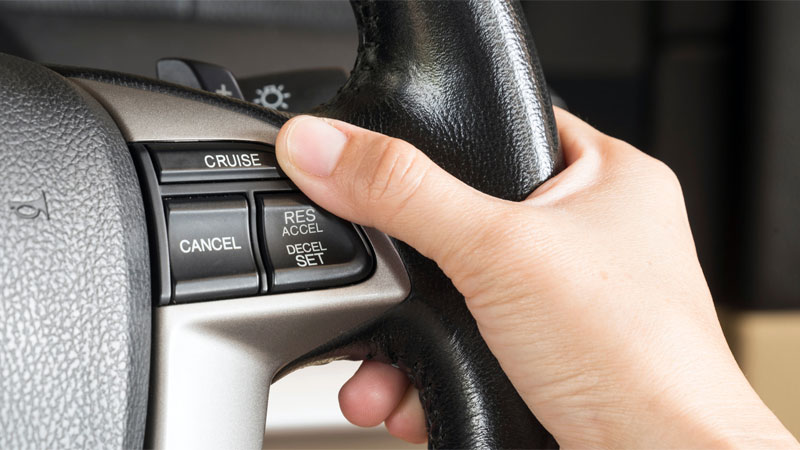
Cruise control has been around since the late 1950s. There was a time when you could only find this convenient feature in a few model vehicles. Nowadays, it seems like virtually every model vehicle on the road has a cruise control feature.
Cruise control not engaging seems like a trivial issue, but the inability to activate this convenient feature can certainly dampen any road trip. While cruise control failures “rarely” pose safety risks, determining the root cause is necessary to restore its use. Let’s look at the common causes of cruise control malfunction.
Table of Contents
Cruise Control Problems (Accelerating or Maintaining Speed)
If your cruise control feature malfunctions and stops working altogether, you may not think it’s an immediate concern. You’ll probably figure that you just can’t use cruise control anymore until you get the problem fixed.
However, the problem with your cruise control might be related to an acceleration issue too. In fact, there are components of cruise control which can have an adverse effect on the acceleration if those components are bad. That is why you need to be aware of what causes cruise control issues.
Common Causes of Cruise Control Not Working
There are several possible causes of cruise control not working. Below are the top 6 most common causes. Check each of these areas and see if they’re the cause of your cruise control issue. In many cases, the remedy to the problem is not that complicated or expensive.
1) Cruise Control Switch

The cruise control switch is what you use to set your cruising speed. This information is transmitted to the engine control unit and cruise control module in order to sustain the acceleration speed.
If the contacts inside the cruise control switch were to wear out, then the module and unit might not receive the necessary speed information it needs to keep the acceleration going. In response, the system will deactivate entirely and cancel the current cruise acceleration set.
2) Brake Light Switch
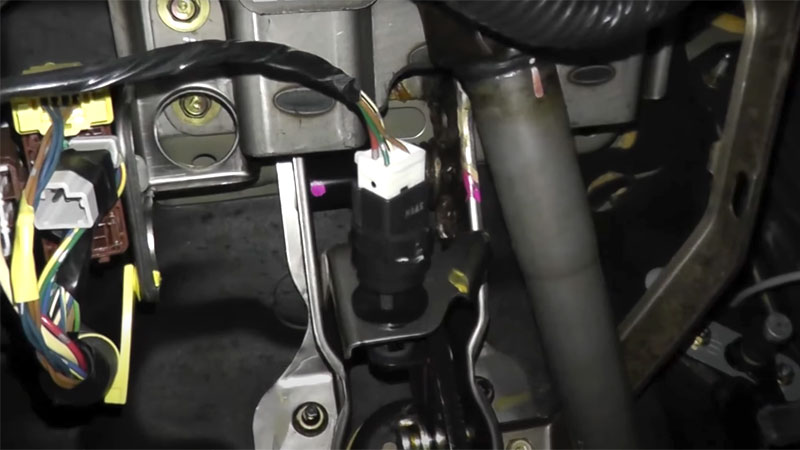
Normally, you press the brake pedal to turn off cruise control. The brake light switch must be detected by the cruise control system for this to happen.
If it cannot detect the switch, then cruise control will disable itself automatically until the brake light switch issue is fixed.
A faulty brake light switch can also cause your brake lights to stay on .
3) Blown Fuse
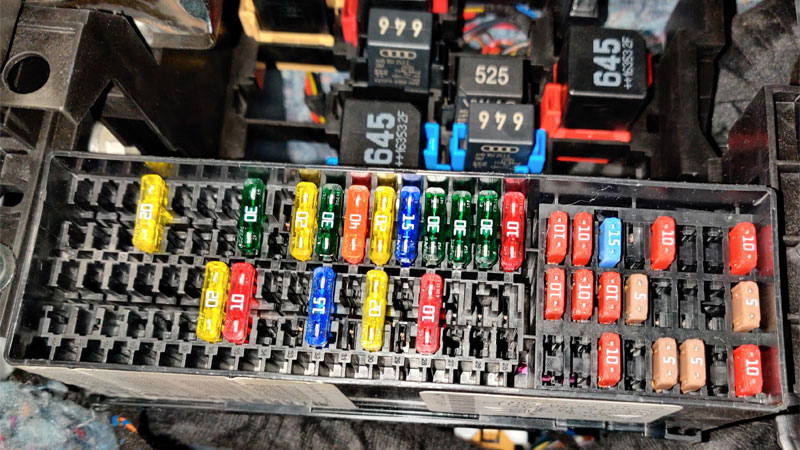
The electrical components of the cruise control system are protected by fuses. Like inside your house, it is possible to blow a fuse. This will cause the cruise control system to turn off until the fuse is replaced.
4) Check Engine Warning Light
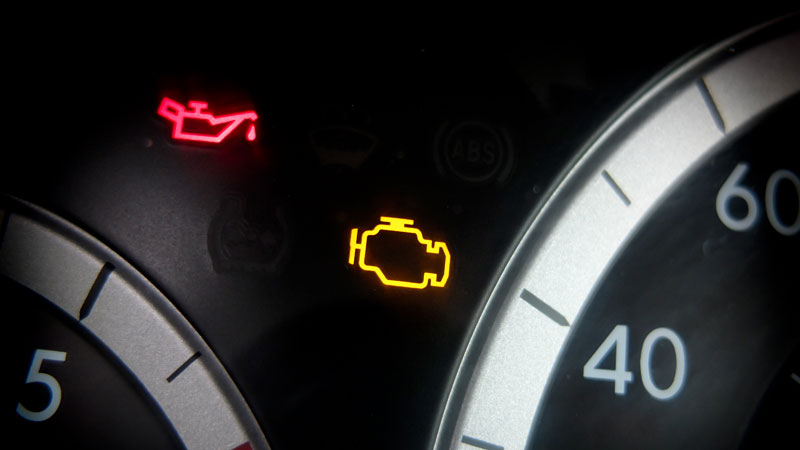
If the check engine warning light comes on, it usually means there is a problem with your transmission or engine. Once the engine control unit detects this problem, it may disable your cruise control system in response as a safety precaution.
Until you fix the engine issue, the cruise control will stay disabled.
5) Vehicle Speed Sensor
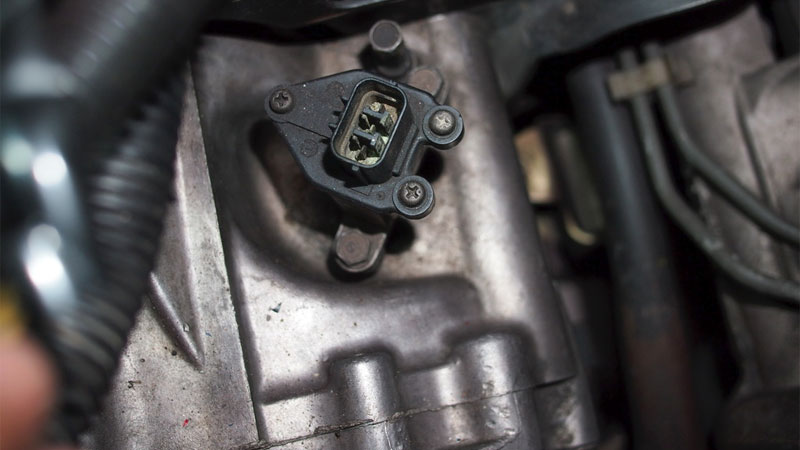
Most vehicles have a few vehicle speed sensors to transmit speed information about the vehicle to the engine control unit and the cruise control module. The only way your cruise control module is going to know how fast the vehicle is moving is if the vehicle speed sensors feed this information to it.
If the module cannot detect the speed because of faulty speed sensors, then the cruise control system will automatically deactivate.
See Also: What Is Speed Volume Compensation?
6) Electrical Issues
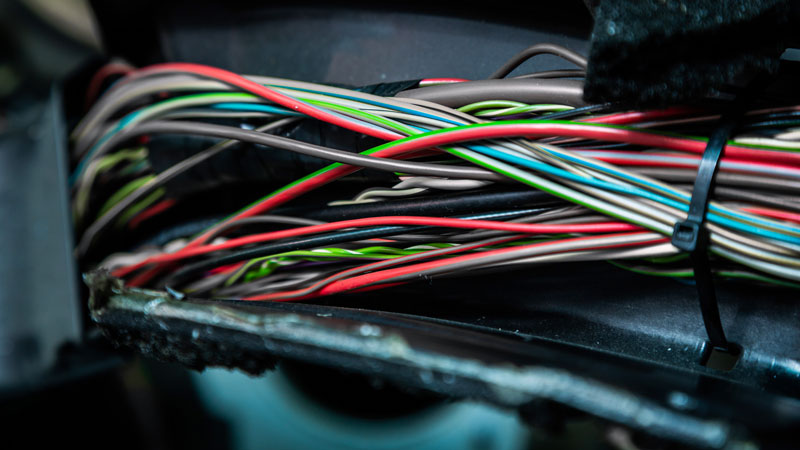
There are several electrical components connected to the cruise control system. The connectors and wiring harnesses, and ground straps are definitely components that you need to check when the cruise control stops working.
Make sure the source of the voltage is still supplying power to the system as well. If any of these components are loose or damaged, then it would explain why the cruise control isn’t functioning.
7) Loose or Broken Cruise Control Cable
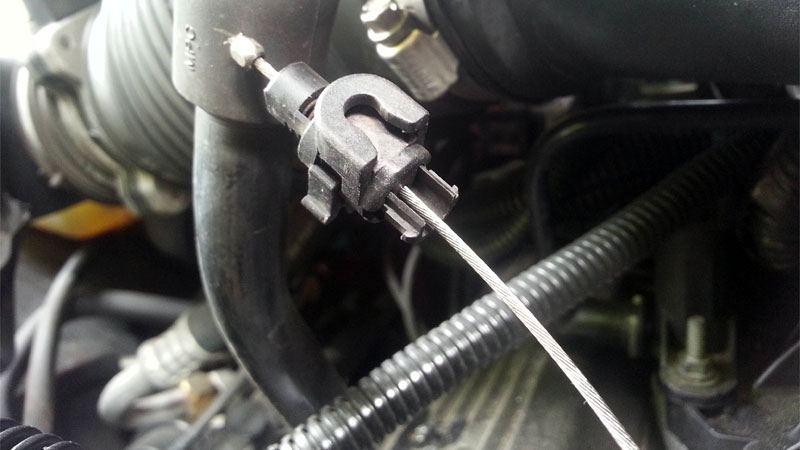
Older vehicles that are equipped with cruise control have two throttle cables – one for the gas pedal and one for the cruise control system.
These cables may stretch over time. If the cruise control cable has stretched or is broken, the cruise control system will not be able to operate the throttle plate properly.
Adaptive Cruise Control Specific Problems

Adaptive cruise control gives an extra layer of convenience while driving, as it adjusts your vehicle’s speed based on the distance to the car in front of you. However, this presents additional causes of cruise control failure.
One issue you might face is obstructed sensors. Both radar and cameras are important components of the adaptive cruise control system. When there’s dirt, debris, or ice covering these sensors, your cruise control can stop functioning. To prevent this, regularly clean your vehicle’s sensors, making sure they’re unobstructed.
Separately, failed cameras can also be a culprit. If the cameras aren’t working correctly, you may see an error warning. It’s best to get this checked by a professional to determine whether the cameras need repair or replacement. Hopefully it’s not as they are an expensive replacement.
Apart from cameras, adaptive cruise control relies heavily on radar technology for proper functioning. A misaligned or malfunctioning radar sensor can cause your system to behave irregularly. Again, consult a qualified technician to diagnose the issue and, if needed, recalibrate or replace the radar system.
Safe Driving Without Cruise Control
When cruise control systems fail, it presents challenges adjusting to speed management without the consistent pacing it provides. But there are a few things you can do.
- Focus on scanning gauges more frequently to stay actively aware of mph.
- Avoid zoning out on long hauls.
- Set phone alerts every few miles to remind checking current travel speed.
- Know highway speed limits well so mentally benchmarking against them continues subconsciously.
- Take frequent breaks stretching legs to re-energize alertness until able to diagnose cruise faults.
- Consider alternative adaptive cruise technologies equipped on newer vehicles if financially viable, providing automated incremental slowing when closing distances on lead cars.
- Remain vigilant of lead car distances and your own speed fluctuations.
- Utilize open lanes with fewer surrounding vehicles if possible, reducing needs for continual minor adjustments.
- Stay alert with renewed attention and defensive awareness absent cruise controls automated convenience until repairs are completed.
Intermittent Fault Identification
When cruise controls experience occasional yet repeating failures, meticulously logging every instance of malfunction helps uncover patterns guiding toward root causes.
Date and time each cutoff or disengagement that happens while activated. Detail any environmental or operational conditions present such as: weather, bumpy vs smooth roads, stop & go traffic versus highway speeds.
Reviewing complete repair histories alongside these event logs indicates if previously replaced components only provided temporary fixes before subsequent re-failure later on. Share documented patterns of when and how interruptions occur with shop technicians to guide their pathway tracing and component testing.
The goal is determining if specific elements like an old switch, wire insulation or solder joint chronically breaks down only under certain temperature, vibration or usage strain thresholds.
Cruise Control Repair Costs
So, your cruise control decided to take a break, and now you’re wondering how much it’ll cost to fix it. Well, repair costs vary depending on the specific issue and your vehicle’s make and model. This section will provide you with an idea of what to expect in terms of expenses.
Let’s look at the common reasons for cruise control problems and their approximate price range for replacement or repair:
- Faulty Cruise Control Switch – $100 – $200. A bit more expensive than a brake light switch.
- Blown Fuse – $5 – $30. Quick and affordable to replace.
- Faulty Brake Light Switch – $50 – $150. Can be a bit pricier but still manageable.
- Defective Speed Sensor – $100 – $300. Falls somewhere in the middle of the price spectrum.
- Throttle Control System Issues – $200 – $600. More expensive to diagnose and fix.
- ABS-related Problems – $200 – $1,000. Can also be quite costly to repair.
- Broken Vacuum Line – $50 – $150. Applicable to older systems and typically inexpensive to fix.
How Does Cruise Control Work?
If you normally drive long distances, especially on the interstate, then cruise control lets you take your foot off the gas while the car maintains the same speed, giving your leg a rest. This may seem like merely a luxurious feature rather than a necessity, but many people depend on it for safe driving.
There are several different types of cruise control systems, but all implementations share similar basic components. There is a sensor to measure vehicle speed, a throttle position sensor , and some mechanism to control the throttle plate without the use of the gas pedal.
Outputs from the speed and throttle position sensors allow the engine computer to determine how much the throttle plate needs to open or close to maintain speed.
Cruise control systems may also use sensors in the transmission, taking the current gear and engine vacuum into account. Throttle position will be different in each gear at a given speed, especially when driving over hills.
Related: How Does Drive-By-Wire Technology Work?
- Recent Posts
- Power Windows Not Working? (10 Common Causes and How to Fix) - February 8, 2024
- 14 Causes of a Car Losing Power When Accelerating - January 23, 2024
- 13 Causes of Poor Gas Mileage (Increase Your MPG) - December 13, 2023
14 thoughts on “7 Reasons Why Cruise Control is Not Working”
My 2003 GMC Envoy has a cruise control issue that I can’t find a fix for anywhere. When I first crank the car and head down the road the cruise control will not engage. But after driving a mile or so, depending on how cool the weather is, I can turn the engine off and re-crank it. Then the cruise control works. On cooler temps it may take two or three restarts for it to engage. Ideas???
have a 2006 VW new Beetle my cruise works fine until i go to pass some one ,any idea what would cause it to do this? ?
When you hit the gas pedal to overtake, you might be disengaging cruise control.
i’ve heard that bad fuel can create such issue. As stated above, the Check Engine light will come on as part of the safety features to inform you something is not right. Cruise control picks up on this and shuts down.
The engine light was flashing then it stopped then started again, the cruise control is disabled but did come on a couple of times but went off when the engine needed to accelerate, the engine shakes when I. Accelerate too.
my aftermarket cruise on a 2013 Kio Rio LX wont light up
You’re going to have a hard time with finding help for that without providing the name and model of the aftermarket system. It might be best to take it to someone so they can troubleshoot in person.
My cruise indicator light will turn on but when I try to set the speed the light will shut off and not turn back on until I restart the engine. Any ideas what it might be?
Did you ever figure this one out. I got 99 Durango does this too
Cruise control goes rite into high speed when turned on,what could the problem be?
This helped me a lot. I got more out of your 6 reasons a cruise control may not work, than when I inquired about the same situation and got nothing. Thank You, Janet M.
Thanks for the feedback, Janet!
Helpful. Thank you
Mine is a mercedes benz c180, 2002 model my cruise control have just stopped working . So what are the possible causes
Leave a Comment Cancel reply

- Broken Down?
- Car Breakdown Cover
- Electric Car Breakdown Cover
- Van Breakdown Cover
- Business Breakdown Cover
- Motorcycle Breakdown Cover
- Classic Car Breakdown Cover
- Personal Breakdown Cover
- Short Term European Breakdown Cover
- Misfuel Cover
- Motoring Advice
- Vehicle Recovery
- Mobile Apps
- UK Accident Assistance Service
- Corporate Social Responsibility
- Which? Recommended Provider
- 5 Star Defaqto Breakdown Cover
- Award Winning Breakdown Cover
- Frequently Asked Questions
- Travel Insurance
- Bicycle Insurance
- Home Insurance
- Motorbike Insurance
- Car Insurance
- Alloy Wheel Insurance
- GAP Insurance
- Pet Insurance
- Latest Stories
- Customer Lounge
- Business Lounge
- Looking for Business Cover?

- Breakdown Cover
- Car Servicing and Repairs
10 potential reasons why your cruise control is not working
What is cruise control.
Cruise control is a way of maintaining a selected constant speed without needing to use the accelerator pedal. It is closely integrated with the traction control and braking systems.
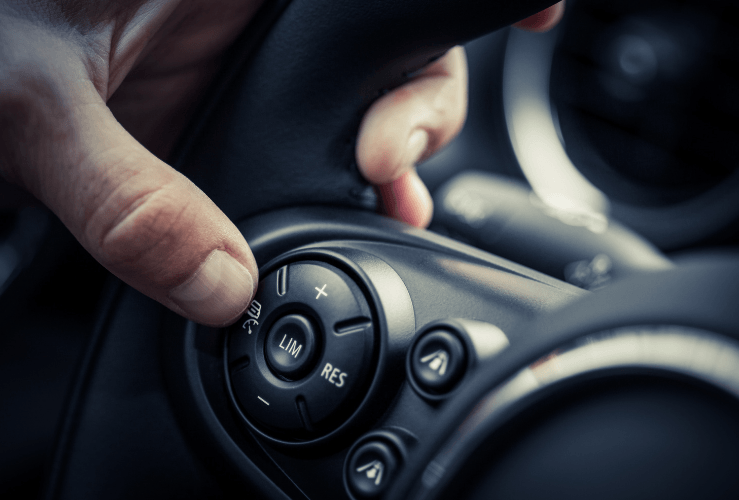
How do I know if my cruise control is not working?
Cruise control systems have become steadily more complex over time. This means it's not always easy to pinpoint why a cruise control system is not working - especially in newer models.
What happens if my cruise control stops working?
While cruise control can make long journeys easier and less stressful, if the system fails it can be dangerous. For example, it may not be possible to cancel a faulty cruise control system - which could have dire consequences. So if your cruise control only works sometimes, or not at all, avoid using it until you can find a solution - by taking it to a trusted mechanic. Alternatively, you may decide to research the issue and attempt to fix it yourself. However, the safest option is to take it to a garage.
Note: You should always check your vehicle handbook for any fault remedy before carrying out any work on your vehicle. If you are unsure of what is required to fix any problems, please consult a professional.
In this article we'll look at 10 of the most common reasons for a malfunctioning cruise control system.
How do cruise control systems work?
Before we begin, it's important to understand how cruise control systems work.
You must first activate the system by pressing the cruise control 'on' button - normally located by the steering wheel. However, this does not activate the system by itself.
Once you've set the cruising speed, the cruise control module (CCM) notes the present speed, then takes over the throttle body to maintain the speed of the car.
As the vehicle’s speed increases or decreases (due to inclines, for example), the CCM makes adjustments to the throttle body opening.
The desired cruising speed is maintained by modulating the engine speed. This speed can be adjusted, or cruise control can be cancelled by pressing 'cancel' or 'off'. The system is also cancelled if the driver applies the brakes.
Paying attention on the road
Cruise control systems are available with varying levels of complexity.
Aside from basic cruise control systems, ‘adaptive cruise control systems’ are often fitted with radar for maintaining safe distances between vehicles behind and ahead. Some even control engine speed in response to nearby vehicles.
Whichever cruise control system your car has, it's critical you still pay attention to other road users in order to avoid collisions. Cruise control should not be considered a fully ‘autonomous’ driving system.
Electronic throttle control systems (ETCS)
With electronic throttle control systems, cruise control is integrated with the engine control module (ECM). These are also known as 'drive-by-wire' systems because of their semi-autonomous nature.
Note that ETCS system failures may require the attention of a trained mechanic.
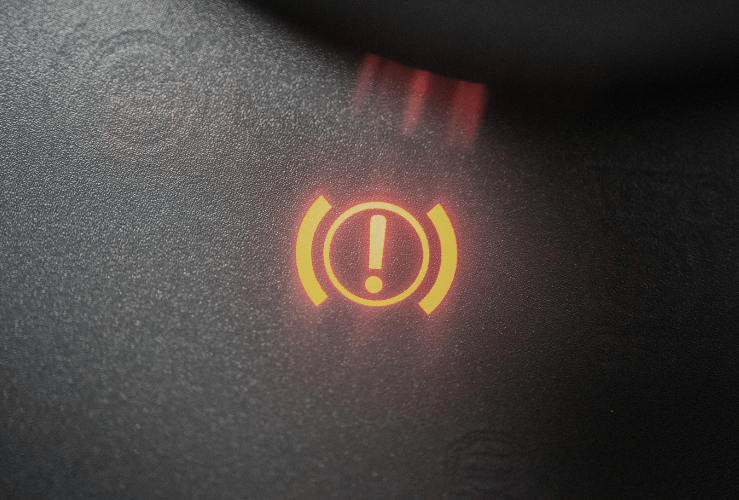
What are the top reasons for cruise control failure?
Brake light switch fault.
Cruise control systems will not activate if they cannot detect a working brake light switch. This is because cruise control systems automatically cancelled once the brakes are applied.
How do you repair a break light switch fault?
If you have some understanding of car mechanics, you may be able to examine the brake light switch, which is located below the steering wheel. However, because such systems have multiple wires, it can be difficult to identify any fault.
You may decide to invest in a multi-application service tool/OBD scanner, which can plug directly into your engine’s computer and pinpoint any fault with your brake light switch.
However, rather than spend money on an OBD scanner and learn how to use it, many people simply replace the brake light switch. Many aftermarket brake light switch replacements are available.
Cruise control switch function: worn out
It's possible for a cruise control switch to wear out over time by being pressed too much or too hard. It may also get damaged by drink spillages or by solvent used when cleaning the steering wheel.
This could mean the CCM cannot be communicated with, potentially disabling cruise control entirely.
How do you check if the cruise control switch function has worn out?
You may be able to confirm this is the issue with an OBD scanner. However, you can check this by looking to see if the cruise control light appears on the dashboard when the switch is operated.
Brake light issues
Some cruise control systems will not activate if they detect a blown brake light. Some aftermarket LED lights draw less current than factory-new lights, which can make the cruise control think a light has been blown.
Spiral cable fault
The spiral cable connects electrical circuits in the steering column to elements in the steering wheel - such as the cruise control activation button. If the spiral cable has an open circuit, the switch may be unable to communicate with the CCM.
Check engine light
Engine or transmission problems may automatically lead to the disabling of cruise control - especially if it's of the ETCS type.
Fuses and relays
The cruise control actuator circuit may be protected by fuses or relays. If these are blown or damaged, the cruise control system may not activate.
Vacuum leak
On some older cars vacuum actuators are used to manage the throttle body when cruise control is activated. A cracked tub or shoe could result in a leak, preventing the system from working. It might also make the engine idle higher.
Vehicle speed sensor fault
The modern car often has multiple speed sensors. If the ECM speed sensor signal used by the CCM is lost, cruise control will not work.
ABS sensor faults
If any of the ABS sensors are faulty (there is normally one on each wheel), the cruise control system will not activate.
Electrical problems
Electrical components are integral to cruise control systems, and should therefore be thoroughly checked in the event of a fault. Issues with source voltage, connectors and wiring harness could disable the system.
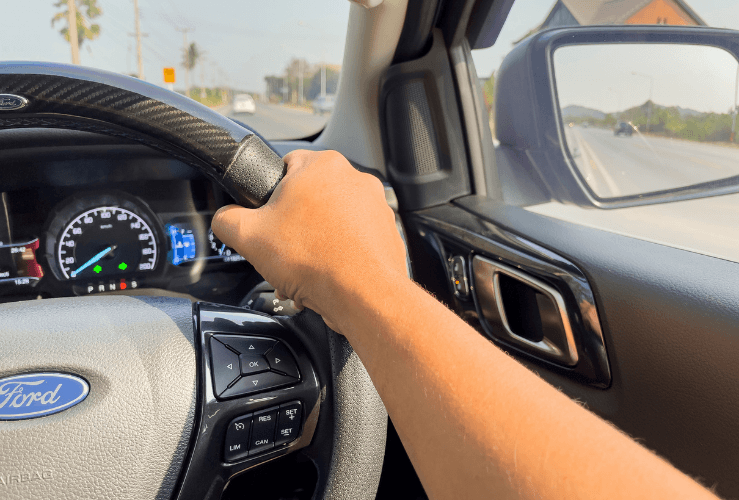
Credit: xzotica65 - stock.adobe.com
Ford cruise control not working?
If the cruise control system on your Ford is not working, the most likely culprits are still those listed above. However, experienced Ford mechanic “ Build It Make It ” on YouTube argues that burned out brake lights are the most common reasons for cruise control failure - especially on models such as the Ford F150.
The next most common reason for faulty Ford cruise control is a blown fuse . Fuses can be checked with a multimeter if you have the required experience, and then replaced.
Build It Make It then lists a broken brake light switch as being the next most common reason. A faulty shifter actuator is listed as the next most common fault cause. This is a lock to ensure you’re not gear shifting when you don’t have the brake engaged. Since the car cannot detect which gear you’re in, it will deactivate the cruise control as a safety measure.
And the fifth most common reason for Ford cruise control not working is faulty control switches . Unless you have extensive automotive mechanical experience, it may be best to have your control switches replaced by a trained Ford mechanic.
More possible Ford cruise control fault reasons
Auto Repair Guys on YouTube list the following as common reasons for Ford cruise control not working:
- Faulty cruise control fuse (often located under glove box) Note: newer Fords may not have fuses for cruise control
- Faulty control switches
- Faulty brake light switch (sometimes integrated with the cruise control switch)
- Faulty ‘cork spring’ or ‘spiral cable’ - as mentioned this connects the steering wheel controls to the car’s computer.
- Motoring Developments and The Future
- Fuel Types and the Environment
- Safety and Security
- Weather and Seasons
- Breakdown Advice
- Driving In Europe
- Tips on Choosing Breakdown Cover
- Motoring Costs
- In-Car Games
- Motorcycling Advice
- Is mobile tyre fitting as good as in a garage?
- How much does it cost to change a tyre?
- What are the signs your clutch needs replacing?
- Broken coil spring symptoms: Can I still drive my car?
- What is An Air-Con Bomb and How Do You Use One?
- When and How to Check Your Car Brakes
- Car servicing: Is using a dealership worth it?
- What is ABS? The Anti-lock Braking System Explained
- Car rust: How to repair and prevent it – Complete guide
- What do I do if my car is juddering?
- Catalytic Converters: What Does a Catalytic Converter Do?
- How much does it cost to replace brake pads?
- Car coolant leaks: What are the signs?
- What is an ECU?
- Regassing your car's air-con: Complete guide
- Top reasons your engine management light is on
- Drink Drive Limits: All You Need to Know
- When should you replace your car shock absorbers?
- Car leaking fuel: Common causes and fixes
- The signs and dangers of a faulty exhaust
- How to prevent voiding your car’s warranty
- How to Reset your Engine Management Light / Check Engine Light
- Car oil leaks: Why they happen and how to fix them
- How far can you drive an overheating car?
- Where do you put antifreeze in your car?
- Low car oil symptoms not to ignore
- Car air conditioning: tips and tricks for super-cool AC
- Car engine oil check: How to do It and when
- How to repair the roof of a convertible car
- Can you tint front windows? How to do window tinting legally
- Tyre bulges: The dangers they pose - and how to fix them
- 10 signs your gearbox is failing
- How to choose a towbar?
- How to repair a paint scratch yourself
- How to change car bulbs: Headlights, indicators and brake lights
- Should I repair or sell my old car?
- I've put the wrong fuel in my car: what should I do?
- How to use a car tyre puncture repair kit
- How to Fit a Tow Bar
- Car tyre size explained
- How to change a car battery
- Car parts: Buy from an authorised dealer or independent garage?
- Is it worth converting a classic car to an EV?
- Common car body shapes: a crash course
- How to check your tyre pressure
- How much oil does my car take?
- Diesel Particulate Filter (DPF) maintenance
- How much is an mot? MOT costs in UK
- Car won't start? Here are common causes and solutions
- Spring cleaning your car
- Head Gasket Guide | Head Gasket Repair UK
- What type of oil does my car need?
- What does brake fluid do and how you can change it yourself
- Blown Turbo Symptoms
- Water is leaking from under my car: What should I do?
- 10 tips for avoiding costly MOT repairs
- Why is my car stalling?
- Timing belt: What does it do? When does it need changing?
- 9 common reasons for failing an MOT
- MOT guide: Common questions answered
- Does breakdown cover include punctures?
- What do Cat C and Cat D mean?
- Keeping your suspension in good shape
- Why does my car smell of petrol?
- How often should you service your car?
- 5 car repairs you shouldn't tackle yourself
- Flooded petrol engine: How to fix it
- How to Fix Your Leaking Sunroof
- Car battery maintenance: How to keep your battery in good condition
- My car is stalling: How do I fix it?
- Air conditioning fault: How to fix it yourself
- DIY puncture repairs: a complete guide
- Cloth or leather car seats: Which are right for you?
- How to transfer a private number plate to your car
- How to take care of your clutch
- Car radiator leak – How to fix
- Car radiator leak – what do you do?
- Paint protection film (PPF) for your car: is it worth it?
- How to install new car front seats: quick guide
- What is a wheel bearing and why is it important?
- Dashboard warning lights: a quick guide
- Why does my car judder when I brake?
- What are run-flat tyres?
- What size engine do I need?
- Damaged windscreen? Here’s why you should fix it promptly
- How much is an MOT test?
- Choosing the right engine oil: A quick guide
- When should you replace your fuel filter?
- Antifreeze - what it does and which you should use
- What is wheel alignment?
- How to remove the smell of cigarette smoke from your car
- MOT: is your vehicle exempt?
- When to change your car battery
- Does your car need a spring clean?
- How to look after your engine
- How to increase the life of your car
- Potholes: How to avoid damaging your car
- Everything you need to know before buying and changing oil
- The benefits of car servicing
- What causes battery problems in winter?
- Ways to clean your car headlights
- When to change your timing belt
- Keeping a tool box in the car: What to carry
Get a Quote

I have had a start rescue policy fow a few years and this year I did not need one as it was included in a change of car insurance. The policy had auto...
excellent office support service, timely arrival, knowledgeable recovery driver, polite and friendly
First time ever having to contact Start Rescue after many years of having there breakdown cover. Using the app was simple, and provided an eta for th...
Thank you very much for your quality of service. - Your service was very professional and effective. I sincerely appreciate your efficient, gracious...
On holiday in Dorset with my 84 year old mother. Fortunately I’d got up to take the dog for walk at Salcome hill as I was as nearing the car park I no...
Fantastic service and could not have done more to help. Regular check ins, quick response time, sound advice and couldn't recommend them highly enough...
A visit to the local safari park turned into a nightmare as the clutch started to go in the Lion's enclosure. The wife rang me as she was driving with...
Fast efficient service with constant speed updates and phone calls from customers service centre assistant when I broke down on M26 in my Audi A3 whic...
We have been with Start rescue for a few years now, always a good price but never had to call before until yesterday. We were stuck on a steep hill wi...
I’m disabled and although I had tried to resolve the problem of my battery failing I found myself having to request a second call out. StartRescue wer...
We use essential cookies to ensure our site is safe and works properly. We also use analytics cookies to offer you a more personalised experience and to improve our site. To find out more and manage your cookie preferences, please choose ‘Manage’ or view our cookies policy.
Need a part or service found for you? Call our experts on 1800 595 454

CarPart · April 6, 2023
Why Is My Cruise Control Not Working? Causes & Cost to Fix
- cruise control
- cruise control failing
The cruise control feature is especially helpful and convenient on long drives. The system keeps the vehicle moving at a steady speed without you minding the accelerator the entire time. Considering how it’s such a straightforward feature, why would it stop working?
A cruise control system can stop working due to (1) a mechanical problem (2) a blown fuse (3) a damaged speed sensor (4) a faulty brake pedal switch or (5) electrical problems. Repair costs can start at $100 and go beyond $500, depending on the affected part, labour costs, and the car brand and model.
Finding your cruise control not working isn’t the end of the world, but it’s undoubtedly something you’d want to fix sooner rather than later. Learn about the possible reasons for a failed cruise control and what you need to fix them.
How Do Cruise Control Systems Work?
You’ll be better equipped in diagnosing or fixing cruise control failure if you understand how it is supposed to work. Let's quickly recap what cruise control systems are and how they function.
Cruise control is a driver-assist feature that maintains your vehicle’s speed even when you take your foot off the accelerator. That’s a helpful feature, especially when driving long distances, as it gives your leg a break from holding the pedal down continuously.
Despite its presence in the market for decades now, few vehicles have it as a standard feature. The few models that come with it have one of three types, i.e.:
- Some have conventional speed limiters.
- Others are smarter with adaptive cruise control.
- Still others have semi-autonomous versions.
You can learn more about how cruise control systems work by reading our in-depth guide here.
For now, though, we’re focusing on when cruise control systems stop working. You’ll know your car has that problem when you experience any of these symptoms:
- The cruise control system doesn’t engage at all.
- The system doesn’t maintain a consistent speed.
- The cruise control warning light is on or flashing.
- The onboard diagnostics system shows a cruise control fault code.
Experiencing one or more of the above means your cruise control system is faulty or has failed. You’ll want to have a technician troubleshoot it for you.
Why Isn’t My Cruise Control Working?
When you find your cruise control not working, the root cause is one of the following:
1. Mechanical Problems
The first reason your cruise control stops working is a mechanical problem. Although newer cruise control systems are heavily computerised, they still use mechanical parts to function correctly.
That’s especially true with older vehicles relying more on mechanical than electronic parts.
For example, there might be a faulty actuator or a damaged cable (linking the actuator to the throttle). Besides that, the system might also have a leaking or damaged hose.
Mechanical faults are typically fixed by replacing the affected part with a new one.
2. Blown Fuse
Cruise control systems require electrical power to function correctly. So, if the system stops working despite its components being in excellent condition, the problem could be a blown fuse .
When a fuse blows, it prevents electrical current from flowing to the cruise control system’s circuit. That’s why you’ll experience problems like the system not engaging or the warning light appearing on your dashboard.
You’ll find the cruise control fuse inside the fuse box, along with all the others your car relies on. Replace it with an identical fuse to restore power to the circuit and get it working again.
3. Damaged Speed Sensor
You might already know that your car has several speed sensors on its wheels or differentials. Those sensors are designed to measure the speed of each wheel and feed that information to the car's onboard computer.
That wheel speed data is used to inform the traction control system. However, the cruise control system also uses that data for its operations.
A damaged speed sensor will send the wrong data about wheel speed, assuming it sends any data at all. Unfortunately, that will also disrupt the cruise control system and stop it from working correctly.
A failed speed sensor needs troubleshooting to find the correct solution. For example, the issue could be a loose or cut wire connection, or you might need to replace the affected sensor with a new one.
4. Faulty Brake Pedal Switch
A faulty brake pedal switch could also be the reason for a cruise control system that isn't working.
The primary purpose of the brake pedal switch is to turn on your brake lights when you step on the pedal. That way, drivers behind you will know your vehicle is slowing down or going to stop.
You might think that one doesn’t have anything to do with the other, but think again, because the brake pedal switch and cruise control are directly connected.
Your cruise control system is designed to deactivate when you step on the brake pedal. The system knows you’re doing that because it’s connected to the brake pedal switch.
As a result, a stuck or faulty brake pedal switch can continuously deactivate your cruise control system and prevent it from working correctly.
Fixing that problem will require you to replace the brake pedal switch.
5. Other Electrical Issues
Last but certainly not least, your cruise control system can stop working due to other electrical issues. That’s because the system requires electrical power to function, so the lack of it will stop the system from working.
For example, a burnt or damaged wire could have stopped supplying power to the system. Alternatively, an electrical fault like a power surge or short circuit could have also damaged the system.
Fixing that problem will require a thorough electrical system diagnosis and repair by a trained technician.
How Much Does It Cost to Fix My Cruise Control?
The price to fix your cruise control varies greatly. For example, the price you pay when you have a Toyota cruise control not working will differ from the repair cost of a Renault Trafic cruise control.
The price will depend on a few different factors, such as:
- Car brand and model
- Replacement part costs
- Labour costs
A minor repair (e.g. replacing a faulty brake switch) could be roughly $100 to $400, while something more intensive could go above $500. Remember that these costs are typically higher for imported or luxury vehicles, as most repairs usually are.
The best thing you can do is call a few workshops and get a precise quotation for your particular vehicle. That way, you’ll know exactly how much to pay to fix your cruise control problems.
Start by using the Directory at CarpartAU to find the nearest workshops in your area. Then, use the contact details on the Directory to call them and get estimates for your cruise control repairs.
Once you find the best deal, bring in your and have them resolve the problem for you.
By Ray Hasbollah
More from the Blog
Explore the opportunity of owning carpart.com.au.
For Sale: CarPart.com.au - Your Gateway to the Automotive World
Are you ready to own a premium domain in the automotive industry? CarPart.com.au is now available for purchase, offering you an exclusive chance to step into the driver’s seat of this established online platform.
What’s Included in the Package?
- Domain Name: Secure the highly sought-after www.carpart.com.au, a single-word domain that speaks volumes in the automotive realm.
- Website: Acquire the entire CarPart.com.au website, featuring the single largest directory of automotive suppliers. Benefit from top-notch Google rankings, providing instant exposure to a vast audience.
- Instagram Page: Take over the Instagram page ( @carpartdotcom ) with a whopping 240,000 real car enthusiasts following. Become an instant influencer and leverage years of engaging content.
- Carpedia: Dive into a treasure trove of automotive information. CarPart.com.au includes Carpedia, a comprehensive resource that draws daily traffic seeking valuable insights into vehicles.
Why CarPart.com.au?
- Instant Exposure: With thousands of top-ten Google rankings, you can own the next car parts marketplace and enjoy instant visibility in a competitive market.
- Endless Possibilities: The opportunities are boundless with a domain like CarPart.com.au. In a time where single-word domains are rare, secure your place as a key player in the automotive industry.
Price: $1.45 Million AUD
How to Inquire: For inquiries or to express your interest, call the number at the top of the page telling us your interested in the sale of the website. Leave a message with our office, and expect a prompt call back.

Crash of an Antonov AN-24 in Moscow

- FS2020 News
- SurClaro Facebook Page
- SurClaro YouTube
- SurClaro Twitter
- SurClaro Instagram

FSX UUEE Sheremetyevo Intl Moscow Russia

Filesize: 4.62 MB | Added on: Nov 19, 2014 | Downloads: 7501


COMMENTS
Cruise control light doesn't illuminate. One of most common symptoms of a problem with the cruise control switch is a cruise control light that will not illuminate. The light should be illuminated as soon as the cruise control system is switched on to notify the driver that the system is activated. If the light does not come on, that may be ...
If the driver presses the coast button and the cruise control still maintains acceleration, the cruise control switch may be faulty. Part 2 of 3: Replacing the cruise control switch. In this instructional article, we'll outline the tools, steps and tips for replacing the cruise control switch system that is located on both sides of a steering ...
The most common reason a cruise control stops working is due to a blown fuse or a defective brake pedal switch. It can also be caused by issues with the throttle control system or the ABS. In older cruise control systems, it can be caused by a broken vacuum line. Here is a more detailed list of the possible reasons your cruise control is not ...
A blown fuse can disrupt the power supply to essential components like the cruise control switch and the Speed Sensor (VSS), causing the system to malfunction. If you find a blown fuse, replace it with a fuse of the same rating and test the cruise control again. Another potential cause of cruise control issues could be a faulty brake pedal ...
Faulty brake switch The brake switch is the button connected to your brake pedal that actually engages the brakes. Because the brake lights are looped into the cruise control circuit, a bad brake switch may prevent the cruise control from coming on for the same reason a bad brake light bulb would prevent it.
Spiral Cable - Many vehicles mount the cruise control switch on the steering wheel. A faulty spiral cable may have an open circuit, preventing the switch from contacting the CCM. Control Switch - If the internal contacts wear out, the cruise control switch may not be able to contact the CCM. This might disable cruise control completely, or ...
Reason #9. Bad Cruise Control Switch. Your vehicle's cruise control switches have internal contacts that wear out. If that happens, the switches won't be able to contact the CCM. Depending on which buttons are faulty, your whole cruise control can stop working or just some functions won't work. Reason #10.
Part 2 of 3: Replacing the cruise control brake switch. After diagnosing that the cruise control brake switch is faulty, you'll need to prepare your vehicle and yourself to replace the sensor. This job is relatively easy to complete, as most brake switches are located under the vehicle's dashboard, slightly over the brake pedal.
Cruise control not working in your vehicle? Today we're going over three main components of the cruise control system - The Cruise Control Main Switch, Cruse...
3. Cruise control works intermittently. Possible cause — this may relate to the brake pedal switch. If cruise control is intermittently disengaging, it could be a wiring issue with the switch. Solution — Have the brake pedal to cruise control switch investigated by a mechanic or technician and determine if there is a faulty wire to blame ...
Brake Light or Brake Pedal Switch: A faulty brake light or brake pedal switch can prevent the cruise control from engaging properly; Electrical System Problems: Issues within the vehicle's electrical system, such as loose wires or damaged components, can impact the cruise control functionality; Worn Cruise Control Switch: Over time, the cruise control switch can wear out, affecting its ...
The brake switch plays a crucial role in the operation of the cruise control system. It is responsible for detecting when the brakes are applied and signaling the cruise control system to disengage. If the brake switch is faulty, it can prevent the cruise control from canceling or engaging. To test the brake switch, follow these steps:
Use a vacuum pump to apply vacuum to the dump hose to approximately 15 inches, and then press on the brake pedal. The vacuum should be dumped and the gauge should read 0. If the vacuum is not ...
Here are 7 reasons your Cruise Control isn't cruising all that well and how to fix it! 1. Fuses and Relays. The cruise control system won't work if the fuse it's connected to has blown or the relay is faulty so here's how to fix it! The Fix. Simply look in the car manual to see what fuse you need, locate the fuse box and switch out the ...
Faulty Cruise Control Switch - $100 - $200. A bit more expensive than a brake light switch. Blown Fuse - $5 - $30. Quick and affordable to replace. Faulty Brake Light Switch - $50 - $150. Can be a bit pricier but still manageable. Defective Speed Sensor - $100 - $300. Falls somewhere in the middle of the price spectrum.
Faulty brake light switch (sometimes integrated with the cruise control switch) Faulty 'cork spring' or 'spiral cable' - as mentioned this connects the steering wheel controls to the car's computer. There are many reasons why your car's cruise control system is not working, including brake light switch faults; worn out control ...
The cruise control clutch release switch is located at the base of the clutch pedal and cuts off power to the cruise control system when the clutch pedal is depressed. This will disable the cruise control system and allow the engine to decelerate so that the driver can safely shift gears and slow down the vehicle.
A cruise control system can stop working due to (1) a mechanical problem (2) a blown fuse (3) a damaged speed sensor (4) a faulty brake pedal switch or (5) electrical problems. Repair costs can start at $100 and go beyond $500, depending on the affected part, labour costs, and the car brand and model. Finding your cruise control not working isn ...
A damaged speed sensor may cause the cruise control not to work properly due to inaccurate readings. Since a damaged speed sensor can also cause problems with the speedometer, it should be fixed right away. 1. Faulty Brake Pedal Switch. When you step on the brake pedal, the brake lights turn on. This is due to the brake pedal switch.
The crew was engaged in a local training flight at Moscow-Sheremetyevo Airport consisting of takeoff and landings in strong cross winds. At takeoff, the right engine was voluntarily shut down.
VGT Студия красок Elektrostal postal code 144003. See Google profile, Hours, Phone and more for this business. 3.5 Cybo Score. VGT Студия красок is working in Hardware stores activities. Review on Cybo.
State Housing Inspectorate of the Moscow Region Elektrostal postal code 144009. See Google profile, Hours, Phone, Website and more for this business. 2.0 Cybo Score. Review on Cybo.
UUEE Sheremetyevo International Moscow, Russia. Sheremetyevo International Airport is an international airport located in the Moscow Oblast, Russia, 29 km (18 mi) north-west of central Moscow. It is a hub for the passenger operations of the Russian international airline Aeroflot, and one of the three major airports serving Moscow along with ...